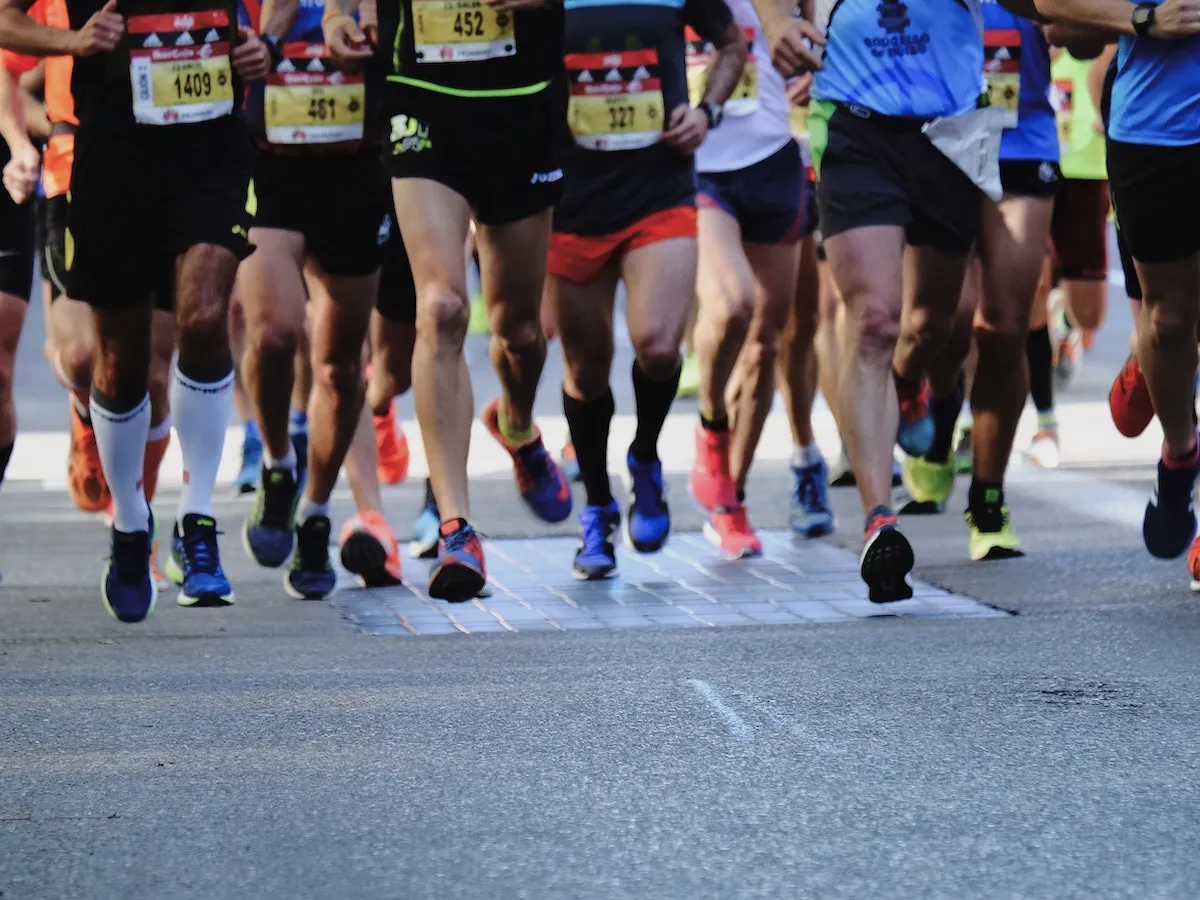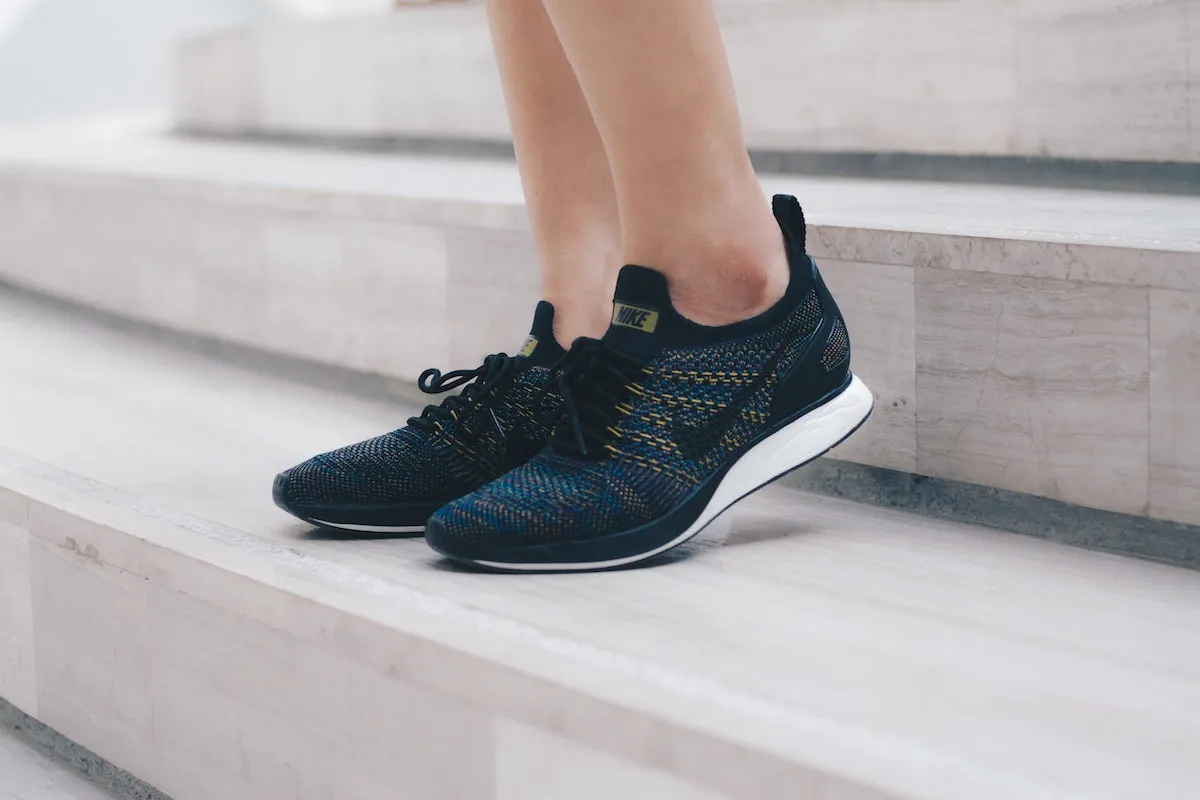When it comes to preventing running injuries, there's a lot we can do, but one of the most basic ways to keep us up and running is to look after our feet.
Here, Christophe Champs, an expert in biomechanics and founder of PODO Clinic and Workshop, explains how to do exactly that.
How to keep your feet healthy
Cream, talcum powder, and socks – it’s important to get these right.
The skin under your foot is seven times thicker than on your face and four times thicker than your body skin, so don’t use any old cream – you need a specialist cream.
Apply cream on the dry and cushioned areas, around the heel and the ball of the foot. Massage the areas where both corns and calluses tend to build up, to improve your skin elasticity.
Do NOT apply cream between the toes. That’s where talcum powder goes. Use it between your toes and on the sole of the foot between the previously creamed areas.
Talcum powder is not designed to dry the skin but to control the perspiration and it leaves a thin protective veil.
Take care of your toenails. Cut your nails short and square, smooth the lateral corners with a glass file (those come with a thick and smooth edge, allowing you to file any potential nail spur, without damaging the surrounding skin).
In case of recurrent black toenails, try both the ‘black toenails and ‘heel lock/runner’s loop’ lacing methods, which you can see demonstrated here.
The importance of socks cannot be stressed enough – they’re not a one-time investment. You need to change them often.
One of my ultra-runner patients sacrifices a pair for his longest and toughest race every year, applying cream directly onto the socks because the skin cannot store the cream for as long.
Use socks that have elastic support in the instep, arch and ankle. This helps to position them well and reduce rubbing, which in turn helps to prevent blisters.
The importance of shoe choice

You can take great care of your feet, but have your efforts wasted by putting them in the wrong shoes.
Walking involves transferring weight from one foot to both feet, to the other foot, back to both feet, and so on. Around 80% of your body weight is reasonably well distributed between your feet when you walk.
Running is different – one foot, no feet, the other foot, you take off again – and running shoes need to cushion each foot landing and require elasticity within the shoe sole for propulsion.
There are a few marketing fairy tales regarding cushion, drops and pronation control, which we’ll touch on here:
Cushioning
You already have the best cushioning: your fat pad. The plantar fat pad (located between your heel skin and heel bone) contains fibro-elastic chambers full of fat globules that have the ability to ‘re-plump’ very quickly. This is the best fat within the human body, yet we all take for granted.
Any foam, even the best marketed, needs much more time to ‘re-plump’ than your fat pad, which is the reason you should never run two days in a row or do your race recovery run with the same pair of trainers.
As good as the fat pad is, it can do with some extra help and protection; you need a strong heel counter in your running shoes and/or a snug heel cup from your orthotics/insoles that will help cradle the heel and prevent this precious fat pad from spreading out.
Next you need to look at propulsion. This is where the cushion under the front fat pad of your foot needs elasticity which gives you better lift and propulsion as your foot pushes off and leaves the ground.
Drop

The drop is the difference in height between the heel and the forefoot.
We read of tribes running long distances without shoes and so some manufacturers have started to make running shoes with no drop. These are often called barefoot running shoes.
Reduced drop shoes are good as an introduction to barefoot running or as an alternative in-between product for people who might doubt their usual running shoes.
Looking at this with a clinical eye, while a reduced drop lowers the heel and brings the foot closer to a barefoot position, it misses the point that your calves, Achilles, and plantar fascia all work together. Pull one and it affects the other.
Therefore, by reducing the drop, you create an excess of traction in those structures. Plus, less material means less support. A lighter sole is sometimes flimsy, and this can lead the forefoot to spread and the toe box to feel narrow.
If you live in a city with hard roads and pavements everywhere and you wear shoes most of the time, my advice is to avoid this trend in your training or at least don’t transition into it overnight.
Your muscles need time and training to adapt. Ideally get some professional guidance to help you avoid injury when transitioning.
Pronation control
In the past, some running shoes claimed to be ‘anti-pronation’, but pronation is your best friend.
At a knee, ankle, foot and big toe level, this natural movement helps your body to absorb shock. More recently, brands have renamed their technologies ‘pronation control’. And the public fear of pronation disappeared.
Pronation control can be helpful and even used on top of orthotics treatment in some cases.
It often comes in the form of a firmer foam, or a hard piece added on the medial side of your shoe sole. Sometimes this is indicated on the sole, such as the Duomax on the Asics Kayano.
It’s essential for anyone providing pronation control to look at the patient’s feet (shape, hard skin location, curly toes, hyper mobility), shin (medial rotation) and knees (bow-leggedness mainly). Pronation control is very personal and is not a one-size-fits-all adjustment.
The role of laces

Laces ensure total fusion between foot and footwear, so before packing your running shoes, check that none of the laces or eyelets are broken.
The design of your running shoe – its upper part – has been built to strap your foot to the sole of your shoes when your laces are tied, and if this is damaged in any way, then it cannot do its job properly.
In stores or online, 46 and 38 size shoes come with the same length lace. So what, you may ask.
But the length of laces matters, especially if you have a large shoe size and intend to use the extra eyelets with the runner’s loop lacing method.
And then there’s the elastic question. Although these laces do save time, you will lose some precious support to control the foot pronation and stabilise the foot.
My recommendation would be to train with non-elasticated laces, and just use the elastic ones on race day.
